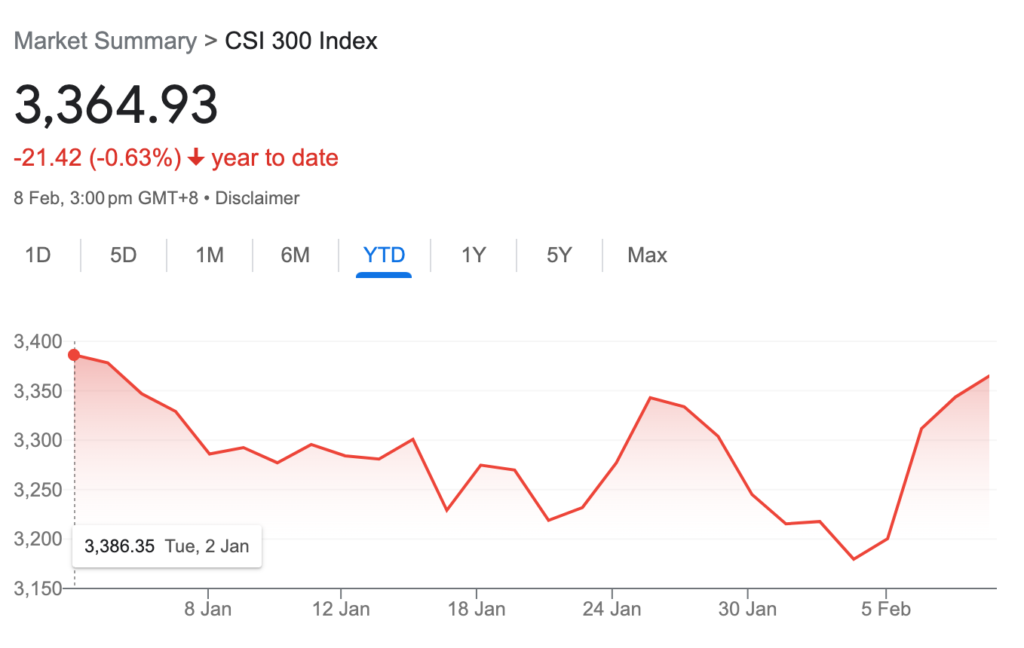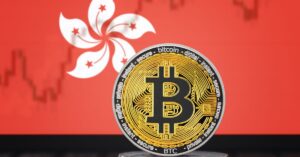In the past few months, the Chinese stock market has been a rollercoaster of volatility, culminating in a dramatic intervention by the “national team” led by Central Huijin Investment. This state-owned fund kick-started a buying spree in October last year that saw A-share ETFs swell by over 400 billion yuan in less than four months. By the end of this period, the net inflow into A-share ETFs soared to a staggering 436 billion yuan, with more than 3,000 billion yuan coming in the early months of this year alone.
The top eight index funds in China market recorded a net inflow of 377 billion yuan, with the leading two funds—E Fund CSI 300 ETF and Harvest CSI 300 ETF—drawing in more than 700 billion yuan each. As of early Feb, this strategic influx of capital effectively reduced the overall market decline.

Causes of the Stock Market Challenges
As 2024 dawned, global stock markets basked in optimism, yet China and Hong Kong’s markets were outliers, languishing in a puzzling slump. According to Bloomberg, the combined market value of China, including Hong Kong, has evaporated by $7 trillion since its peak in February 2021. The descent hit a dramatic nadir on February 5, 2024, when the mainland’s A-shares experienced a huge drop, with over 5,200 stocks plummeting, including more than 1,000 hitting their limit-down.
But why did China’s stock market find itself in such a dilemma? Many analysts point to two main reasons: a slower-than-expected economic recovery post-pandemic and a real estate sector crisis, which has led to concerns over long-term economic stagnation. The country’s GDP growth in 2023 was only 5.2%, marking one of the lowest rates since 1990, excluding the pandemic period. Analysts fear this slowdown could be structural, potentially dropping to 4% or lower, a stark contrast to China’s previously rapid growth rates.
The downturn in the property market, highlighted by reduced demand and falling prices, along with significant developers facing debt crises, has further exacerbated economic difficulties. Additionally, the withdrawal of foreign investment, as investors from the United States and other countries significantly reduce their stakes in Chinese stocks, adds complexity to China’s economic challenges. This trend of net outflows of foreign capital reflects growing investor caution and could take years to recover. Data shows that the world’s top 40 asset management companies are under-allocated in Chinese stocks by approximately two percentage points, indicating long-term investors’ concerns over China’s economic and policy outlook.
The Government’s Stock Bailout
Following a tense six days of consecutive declines, the Chinese stock market made a remarkable rebound on 6 February 2024, bolstered by the national fund’s efforts to salvage the plunging market and regulatory actions to combat malicious short-selling. The resurgence was notable across the board, with the Shanghai Composite Index, Shenzhen Component Index, and the ChiNext Index rising by 3.23%, 6.22%, and 6.71%, respectively. Sectors such as semiconductors and chips led the charge, while over 3,800 stocks across the board registered gains, pushing transaction volumes beyond 910 billion yuan.
The government’s strategy, heavily investing in ETFs, is seen as a move to provide a stabilizing force for the capital market. By increasing holdings in ETFs, the government aims to cushion market volatility and signal its readiness to support the financial system. This approach has paid dividends, as evidenced by the swift recovery post-intervention, with significant inflows into the top index funds and a marked increase in overall market activity.
Apart from their ongoing ETF investment strategies, Chinese regulators enacted several key measures early in the year: on 25 January, they lowered the interest rates for agricultural loans and loans aimed at small, micro, and private enterprises by 0.25 percentage points: on 5 February, the reserve ratio requirements for banks were cut by 50 basis points, releasing approximately 1 trillion yuan into the market to enhance liquidity. Additionally, on 6 February, the China Securities Regulatory Commission unveiled three new regulations to strengthen the oversight of securities lending, effectively imposing restrictions on short-selling to mitigate market fluctuations and foster a more stable investment environment.
How are the HNWIs Reacting?
This market turbulence has underscored a shift in investment strategies for high-net-worth individuals (HNWIs) in China. Traditionally, Chinese HNWIs, known for their high-risk tolerance, have diversified their portfolios across stocks, bonds, real estate, and even alternative investments like art and collectibles, often leveraging their investments to maximize returns.
However, the current market conditions, coupled with a recalibration in risk appetite, are prompting a more balanced, moderate-risk investment approach. For instance, Jessica Cutrera of Leo Wealth points out that the leverage ratios for private banking clients in Asia, which used to reach up to 50-60% of their assets, have decreased due to the market downturn and rising interest and borrowing costs.
The shift in investment preferences is driven by a need to protect their wealth from further market volatility while ensuring that their portfolios remain liquid. However, liquidity is still increasingly crucial, allowing these investors to stay agile and prepared to take advantage of new opportunities or to weather unforeseen challenges. This strategic adjustment underscores a broader trend among China’s affluent: a move towards a more cautious and balanced approach to managing their investments, prioritizing the security of their assets, and the flexibility to adapt to a rapidly changing economic environment.




